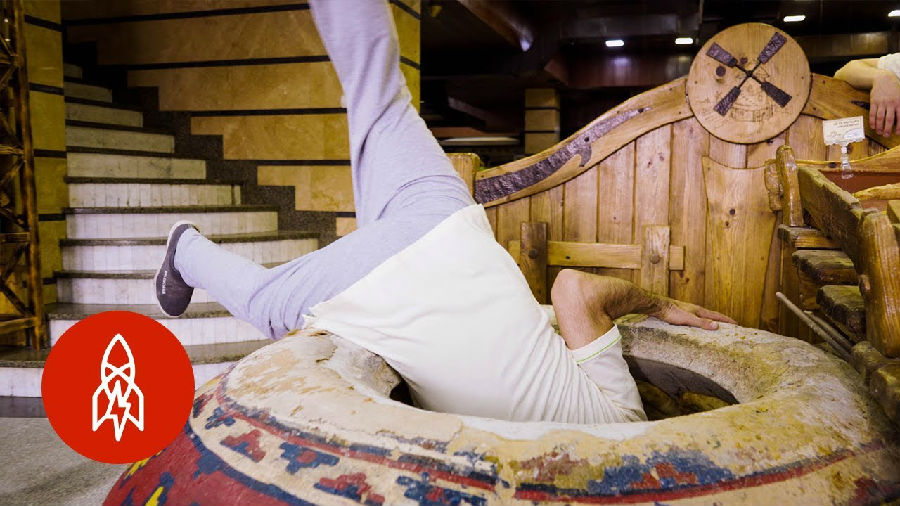Side note, no bread makers were injured in the making of this video.
旁注,制作此視頻期間,烤面包的師傅沒有一個人受傷。
As you can probably gather, this is not your average bread maker.
你或許已經(jīng)猜到了,這個視頻要講的絕不是你們身邊那些尋常的烤面包師傅。
Nor is this your average bread oven.
也不是尋常的面包烤爐。
Nor is it your average bread.
也也也不是尋常的面包。
This is shotis puri, and in Georgian that translates to, well, bread.
這種面包在格魯吉亞語里叫shotis puri,翻譯過來就是,嗯,面包。

A tonir oven is essential to the making of shotis puri.
tonir烤爐是制作shoti puri的關(guān)鍵。
After the oven is built and the heat is turned up to the highest level for six to seven hours,
烤爐砌好以后,用最大的火燒6至7個小時,
the walls of the oven are covered in a salt based liquid.
再給爐壁涂滿鹽水。
And diving in to get the bread as close to the fire is just a part of the job.
鉆到烤爐中把面餅盡可能靠著火源貼上去只是其中的一個環(huán)節(jié)。
As if diving into a clay pot isn't intense enough, this thing hits temperatures of 750 to 900 degrees Fahrenheit.
仿佛鉆入泥爐給這份工作帶來的強度還不夠,這種爐子的溫度足足高達750到900華氏度(約400到480攝氏度)。
The end result is a special bread with a salty twist that's eaten on special occasions, like birthdays, weddings, Christmas and New Years.
最終烤出的面包帶點兒咸味兒,通常用于生日,婚禮,圣誕節(jié)和新年等特殊場合。











